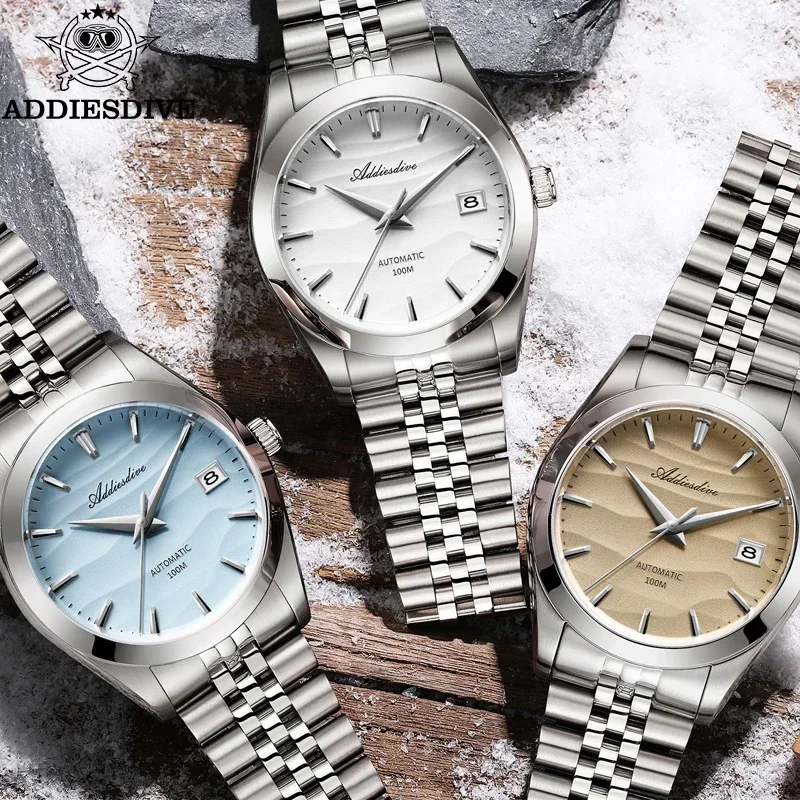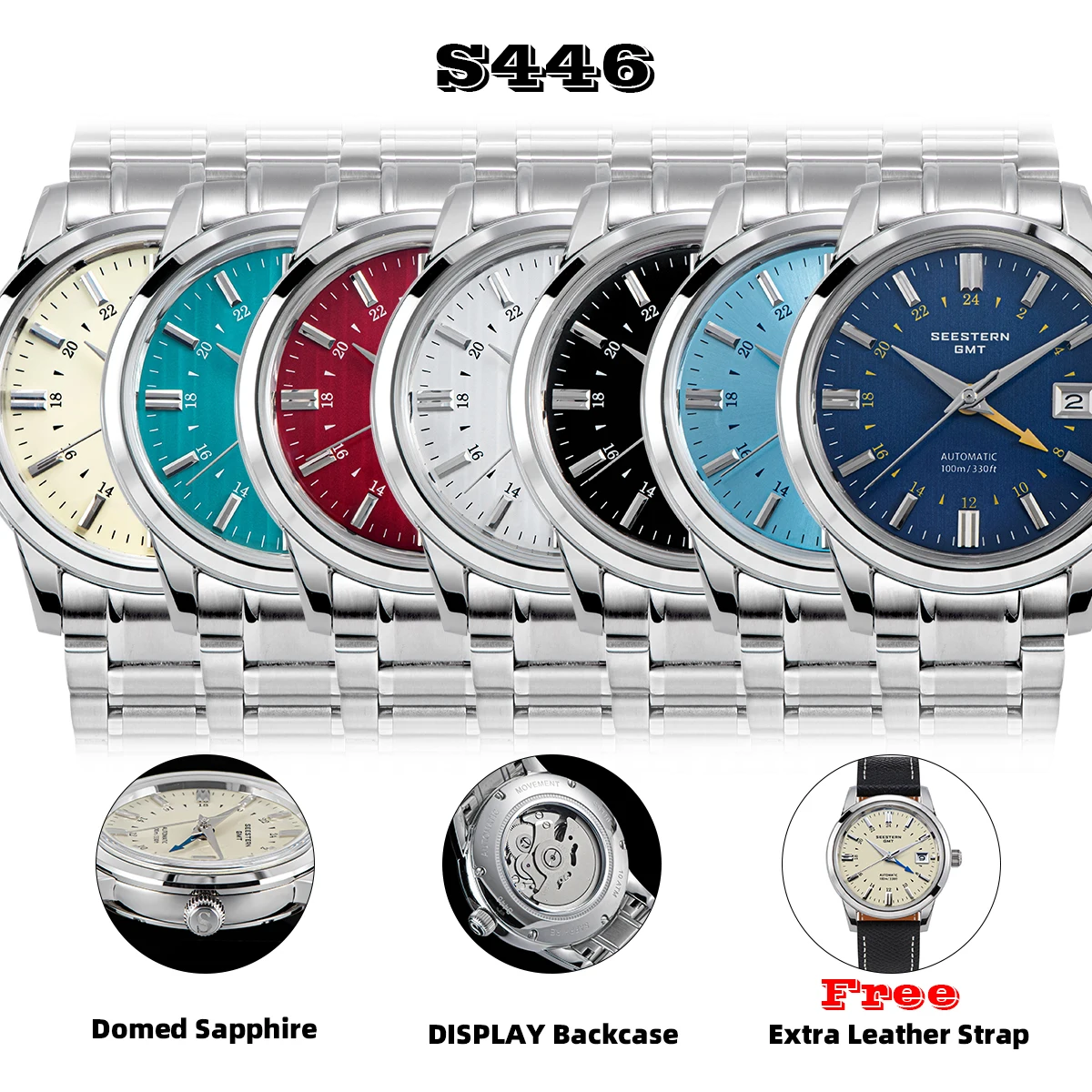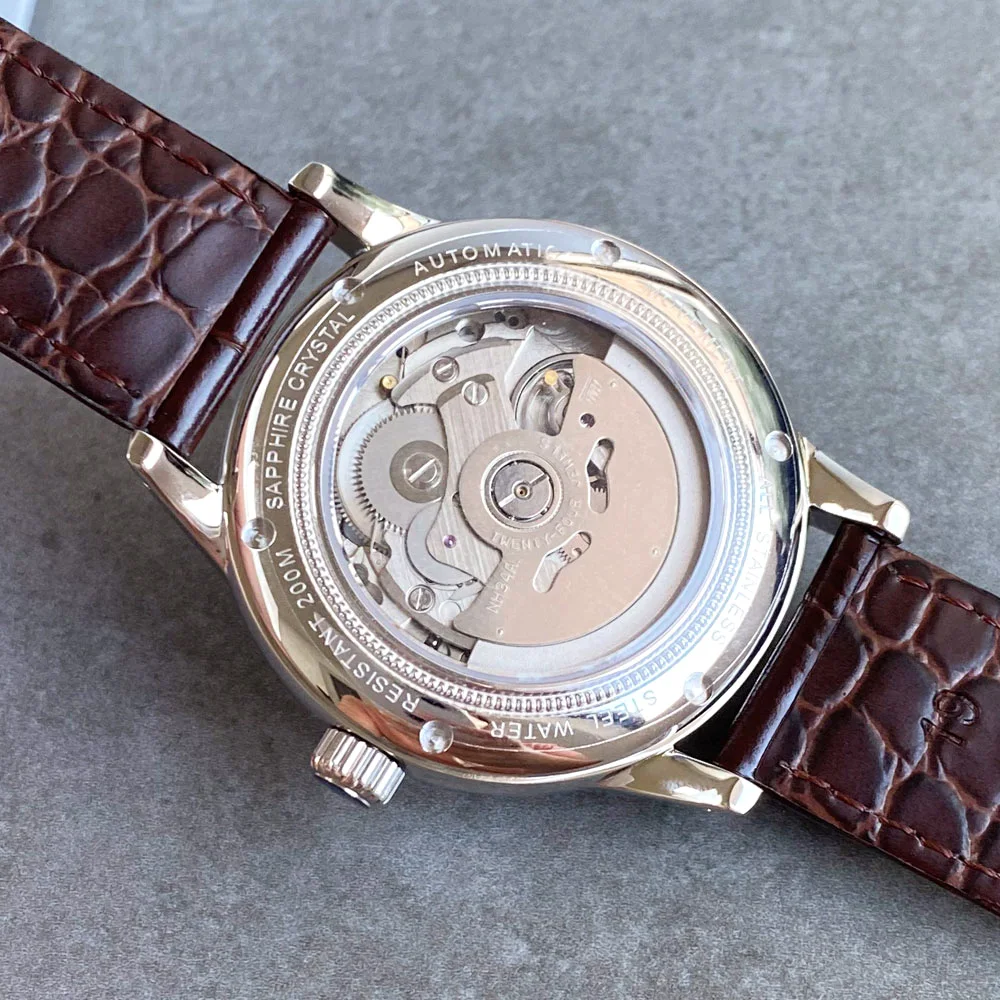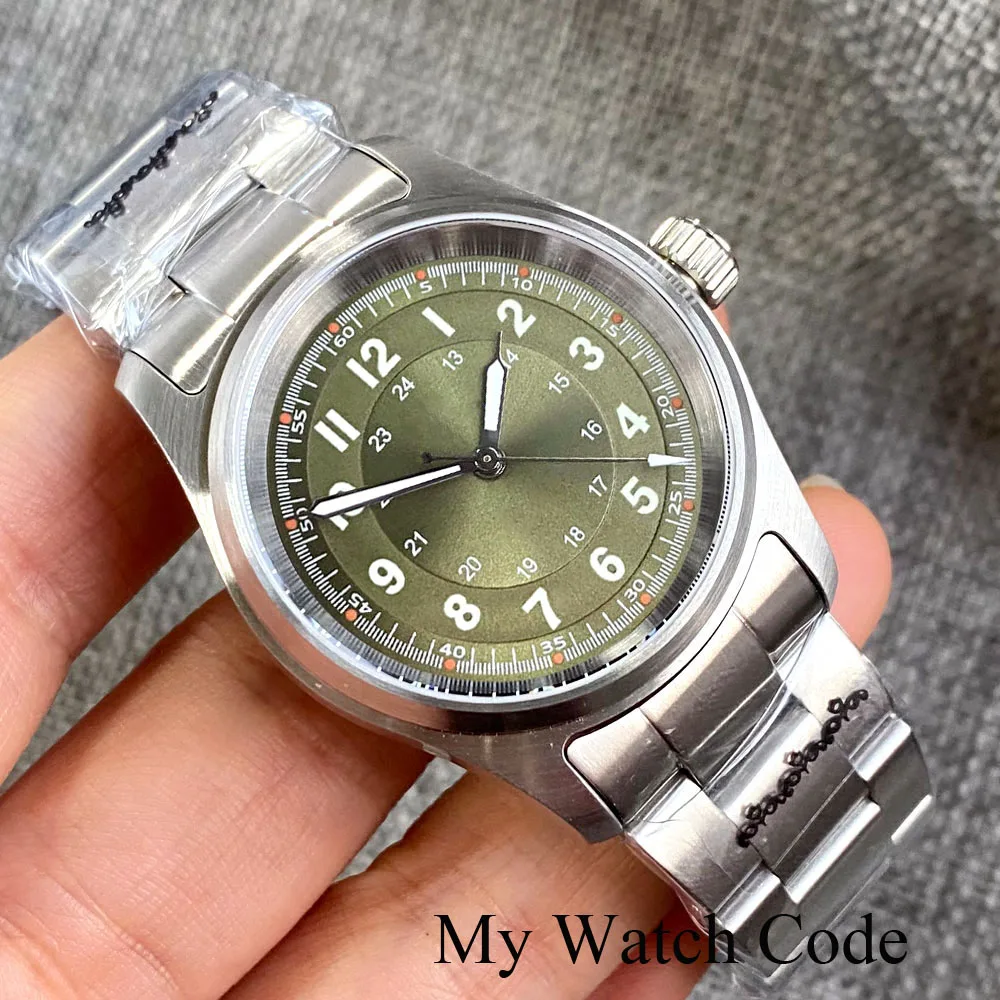What Makes an Automatic Watch Truly “Field-Tested”?
The term “field-tested” represents far more than clever marketing—it embodies a philosophy of watchmaking centered on proven performance in challenging conditions. A genuinely field-tested automatic watch has demonstrated its reliability when exposed to temperature extremes, moisture, shock, dust, and the general rigors of active use.
The concept originated with military timepieces designed for battlefield conditions, where reliability could mean the difference between life and death. These watches featured robust cases, high legibility, and dependable movements that could withstand the harshest environments. Over time, this military heritage evolved into civilian field watches that maintain the same core principles while adding refinements for everyday wearers.
What separates truly field-tested watches from pretenders is the distinction between laboratory testing and actual performance in demanding environments. While controlled tests provide valuable data, nothing compares to how a watch performs on the wrist during hiking expeditions, diving excursions, or military operations. These real-world experiences reveal weaknesses that no laboratory could anticipate.
The value proposition of owning a proven field-tested automatic watch extends beyond durability. These timepieces offer peace of mind, reliable functionality without dependence on batteries, and often become more cherished as they develop a patina that tells the story of your adventures together. The integration of tactical elements in automatic watches has further enhanced their field capabilities, while automatic field military watches continue to represent the gold standard for reliability.
Essential Components of Field-Tested Automatic Watch Designs
The exceptional durability of field-tested watches comes from the harmonious integration of several critical design elements:
- Movement Robustness: The beating heart of the watch must withstand shocks, temperature changes, and magnetic fields
- Case Construction: Provides structural integrity and environmental protection
- Crystal Material: Offers clarity while resisting impacts and scratches
- Water and Dust Resistance: Seals the watch against environmental intrusions
- Dial Legibility: Ensures functionality under adverse conditions
- Strap/Bracelet Durability: Secures the watch reliably during activity
What makes a field watch special is how these elements work together as an integrated system. The most durable case means nothing if the movement inside can’t handle vibration. Similarly, water resistance becomes pointless if the crystal cracks easily under impact.
Designing a true field watch requires balancing rugged functionality with wearable comfort and aesthetics. The best examples don’t sacrifice beauty for toughness—they find the sweet spot where form and function enhance each other. The engineering principles behind military watch features for extreme conditions provide the foundation, while modern rugged automatic watches demonstrate how these concepts can be executed with contemporary materials and manufacturing techniques.
Our Evaluation Methodology: How We Identify Genuine Field-Tested Watches
At Sharp Aspect, we employ a comprehensive methodology to identify automatic watches that truly deserve the “field-tested” designation:
- Historical Performance Analysis: We research each model’s track record in challenging environments, including military use, expedition wear, and professional applications
- User Experience Verification: We collect feedback from professionals who rely on these watches daily, from military personnel to outdoor guides and first responders
- Material and Construction Assessment: We evaluate the quality of materials and construction techniques against established durability benchmarks
- Movement Reliability Records: We research service records and common failure points to identify movements with proven reliability
- Environmental Resistance Verification: We confirm actual performance against claimed specifications for water, shock, and temperature resistance
We place special emphasis on long-term user experiences rather than initial impressions. Many watches perform admirably out of the box but develop issues after months or years of hard use. The performance of automatic watches in military service provides particularly valuable data about long-term reliability under stress.
Our methodology goes beyond manufacturer specifications to identify watches that have proven themselves where it matters most—in the field, on the wrist, under challenging conditions.
Robust Automatic Movements: The Heart of Field-Tested Reliability
The automatic movement serves as the critical component determining a field watch’s reliability. Unlike quartz watches that depend on batteries, automatic watches harness kinetic energy from the wearer’s motion, making them self-sufficient during extended field operations.
The most field-proven automatic movements share several key characteristics:
| Movement Feature | Field Performance Benefit |
|---|---|
| Shock Protection | Protects against impacts during active use |
| Anti-Magnetism | Maintains accuracy near electronic equipment |
| Temperature Tolerance | Ensures reliable operation in varying climates |
| Simple Construction | Fewer parts mean fewer potential failure points |
| Service History | Well-documented reliability over decades of use |
Shock resistance systems like Incabloc, Diashock, and Parachoc protect the most delicate components—particularly the balance wheel and escapement—from damage during impacts. These ingenious systems use spring-loaded settings that allow components to briefly shift position during shocks before returning to their original alignment.
Anti-magnetic protection has become increasingly important as we surround ourselves with electronic devices. Field-proven movements employ various solutions, from simple nickel-based alloy hairsprings to sophisticated magnetic shields that surround the entire movement.
Serviceability represents another crucial consideration for field watches. The finest movement is worthless if it cannot be maintained or repaired. Field-tested movement designs typically feature standardized parts and widespread service knowledge, ensuring how long automatic watches last is measured in decades rather than years.

Case Construction: Shields Against the Elements
The watch case serves as the primary defense against environmental threats, making its design and materials crucial for field performance. The most field-tested watches employ thoughtful case construction that balances strength, weight, and wearability.
Material selection significantly impacts field performance:
- 316L Stainless Steel: The standard bearer, offering excellent corrosion resistance, durability, and affordability, with proven performance in diverse environments
- Titanium: Approximately 40% lighter than steel with superior corrosion resistance, though more prone to scratching unless treated
- Bronze: Develops a protective patina over time and offers antimicrobial properties, popular for marine applications despite its weight
- Hardened Steel: Specially treated to increase hardness beyond standard steel, offering superior scratch resistance
Beyond material, design elements like crown guards protect vulnerable components from impacts. Screw-down crowns and case backs create superior water and dust resistance compared to push-in alternatives. The ultimate guide to tough watch cases explores these elements in greater detail.
Protective coatings add another dimension of durability. DLC (Diamond-Like Carbon) provides exceptional hardness and scratch resistance with a distinctive black appearance. PVD (Physical Vapor Deposition) offers various color options with good durability. These coatings protect the underlying material while maintaining dimensional precision.
The relationship between case thickness and water resistance merits special attention. While thicker cases generally allow for greater depth ratings, they must be balanced against wearability. The most successful titanium automatic watches achieve this balance through sophisticated engineering rather than brute-force thickness.
Crystal Selection: Balancing Clarity and Durability
The watch crystal presents a unique challenge: it must provide perfect clarity while resisting impacts and scratches. Three primary materials dominate the field:
Sapphire Crystal offers nearly unscratchable hardness (9 on the Mohs scale), providing excellent long-term clarity. However, its hardness comes with increased brittleness compared to softer materials. While highly resistant to scratches from everyday objects, sapphire can shatter under direct impacts. Anti-reflective coatings enhance visibility but may wear over time, especially on the exterior surface.
Mineral Crystal (including Hardlex) provides a middle ground between durability and affordability. These glass-based crystals undergo chemical or thermal treatments to enhance hardness. While more prone to scratching than sapphire, they offer better shatter resistance, making them suitable choices for watches likely to experience impacts rather than abrasion.
Acrylic Crystal (Hesalite/Plexiglass) represents an older technology that maintains relevance in field applications. These plastic crystals scratch easily but resist shattering better than either mineral or sapphire. Their advantage lies in impact scenarios—instead of shattering, they absorb the force. Minor scratches can be easily polished out with common compounds.
The crystal’s shape also affects durability. Domed profiles distribute impact forces better than flat crystals, while recessed mounting within the case bezel provides additional edge protection. The best field watches consider both material and geometry in their crystal design.
Field-Optimized Dials and Hands: Legibility Under Pressure
A field watch’s primary function—telling time at a glance under adverse conditions—depends entirely on dial and hand design. The most field-tested watches feature dials optimized for instant readability.
High-contrast color schemes form the foundation of field watch legibility. The classic black dial with white markers provides maximum contrast in daylight conditions, while white dials with black markers excel in bright sunlight. The military-inspired field watch typically employs this high-contrast approach with minimal decorative elements to prevent visual confusion.
Lume technology has evolved significantly, with two primary approaches dominating field watches:
- Photoluminescent Compounds (Super-LumiNova, C3, BGW9) absorb light energy and release it slowly in darkness. The best applications feature generous application thickness and strategic placement.
- Tritium Gas Tubes contain mildly radioactive gas that glows continuously without requiring “charging.” Though less bright initially than fully-charged photoluminescent markers, their consistent output makes them preferred for extended nighttime operations.
Dial layouts optimized for field use typically feature prominent minute markers, as many tactical operations require precise time measurement in minute increments. The traditional luminosity in tactical automatic watches emphasizes this principle, with some models featuring 24-hour scales for military time reference.
Hand design plays an equally important role in legibility. The most field-proven configurations use hands of sufficient length to precisely reach their corresponding markers, with distinct shapes that prevent confusion between hour and minute indicators. The principles of optimizing tactical watch dial layouts extend to practical considerations like ensuring the second hand is visible for timing operations.
Top 5 Field-Tested Automatic Watch Designs for Reliability
1. The Classic Military Field Automatic
This design draws direct inspiration from military issue watches, featuring a simple three-hand layout on a high-contrast dial. The stainless steel case typically measures 38-40mm, offering excellent wearability while providing sufficient durability for field use.
Key Durability Features:
– Shock-protected automatic movement with proven reliability
– Double-domed sapphire crystal with inner anti-reflective coating
– Screw-down crown and solid case back ensuring 100m+ water resistance
– C3 Super-LumiNova on hands and markers for excellent nighttime visibility
– Drilled lugs for secure strap changes in the field
Real-World Performance:
These watches excel in versatile outdoor scenarios, from hiking to camping, and have proven reliable for military personnel in training environments. Their simple construction minimizes potential failure points.
2. The Professional Diver Automatic
Built to withstand underwater pressure and corrosive saltwater, professional dive watches often make excellent field watches for all environments.
Key Durability Features:
– Unidirectional rotating bezel with timing scale
– Helium escape valve for professional saturation diving
– 300m+ water resistance with screw-down crown
– Highly luminous dial and hands for underwater visibility
– Bracelet with diver’s extension or fitted rubber strap
Real-World Performance:
These watches have accompanied explorers to the ocean’s depths and mountain summits alike. The overbuilt water resistance provides peace of mind in any precipitation, while the simple timing bezel offers practical functionality beyond diving.
3. The Expedition GMT Automatic
Designed for travelers crossing time zones in challenging conditions, these watches combine field durability with additional functionality.
Key Durability Features:
– Independent GMT hand for tracking second time zone
– Anti-magnetic properties exceeding standard requirements
– Bidirectional rotating 24-hour bezel
– Enhanced shock protection systems
– 200m water resistance suitable for most adventures
Real-World Performance:
These watches serve explorers, pilots, and adventurers who need to track multiple time zones while maintaining reliability in changing environments. The GMT function proves particularly valuable for coordinating communications across distances.
4. The Adventure Chronograph Automatic
Integrating stopwatch functionality with field durability, these watches offer precision timing in rugged packages.
Key Durability Features:
– Chronograph functions with secure pushers
– Reinforced movement mounting to handle recoil from pusher operation
– Tachymeter scales for practical speed/distance calculations
– Enhanced water resistance despite chronograph complications
– High-visibility chronograph hands for quick readings
Real-World Performance:
While chronographs contain more moving parts than simpler watches, the best field-tested designs have proven reliable even in challenging environments. They excel in situations requiring precise timing intervals.
5. The Modern Tactical Automatic
Blending traditional field watch reliability with contemporary materials and design, these watches represent the cutting edge of durable timekeeping.
Key Durability Features:
– Lightweight titanium or carbon composite cases
– Advanced movement shock absorption systems
– Enhanced anti-magnetic properties
– Special dial configurations for tactical operations
– Multiple illumination technologies for varied light conditions
Real-World Performance:
These watches represent the evolution of field watch design, incorporating lessons learned from decades of field use with modern materials science. They’ve proven themselves in professional security operations and extreme outdoor pursuits.

Each of these designs has earned its reputation through real-world performance. For those seeking classic field aesthetics with proven reliability, our collection of classic field watches offers excellent options.
Straps and Bracelets: The Forgotten Durability Factor
The attachment system securing your watch to your wrist represents a critical component of field reliability that many enthusiasts overlook. A watch with the most robust case and movement becomes useless if its strap or bracelet fails during critical operations.
NATO and ZULU Straps
– One-piece design eliminates the risk of losing the watch if a spring bar fails
– Nylon construction withstands moisture, abrasion, and UV exposure
– Quick-drying properties prevent skin irritation during extended wet wear
– Easily replaceable in field conditions with minimal tools
– ZULU variants feature heavier material and rounded hardware for enhanced comfort
Rubber Straps
– Natural resistance to water, chemicals, and UV radiation
– Flexibility accommodates wrist swelling in hot environments
– Ventilation channels reduce sweat accumulation during activity
– Superior tensile strength prevents tearing under stress
– Modern compounds resist “vanilla scent” deterioration of older formulations
Metal Bracelets
– Solid end links eliminate a common failure point in bracelet design
– Screwed links provide more secure connections than push pins
– Machined clasps offer more reliable operation than stamped alternatives
– Diver’s extensions accommodate wetsuit compression during deep dives
– Quick-adjust systems allow for comfort adjustments during temperature changes
The attachment between spring bars and the watch case deserves particular attention. Drilled lugs allow for easier strap changes and more secure spring bar seating, while flanged spring bars provide additional security against accidental release. For the most demanding applications, fixed bars create a nearly indestructible connection point, though at the cost of strap versatility.
Water and Dust Resistance: Understanding Real-World Protection
Water resistance ratings often represent the most misunderstood specifications in watchmaking. The numbers on a watch dial indicate static pressure testing in laboratory conditions, not actual depth capabilities in dynamic real-world environments.
A watch marked “100m water resistant” hasn’t necessarily been tested at a depth of 100 meters. Instead, it has survived pressure equivalent to that depth in a controlled test chamber. The ISO 6425 standard for dive watches requires additional testing for true underwater capability, including dynamic pressure tests and crown operation verification.
Practical Water Resistance Guidelines:
– 30m: Resistant to rain and splashes, not suitable for swimming
– 50m: Suitable for swimming in calm water, not for diving or water sports
– 100m: Appropriate for recreational swimming and snorkeling
– 200m+: Suitable for recreational diving and water sports
– 300m+: Professional diving capability when conforming to dive watch standards
Water resistance depends on properly maintained gasket systems—rubber or silicon rings that create watertight seals at case openings. These gaskets naturally degrade over time due to temperature fluctuations, chemical exposure, and mechanical wear. Regular testing and gasket replacement (typically every 2-3 years) maintain the specified water resistance.
Dust resistance receives less attention but proves equally important in many field environments. The tiny particles in dust can infiltrate a watch case more easily than water and cause significant damage to movement components. The best field watches employ multiple defense layers, including case gaskets, crown tube designs, and sealed case backs to prevent particulate intrusion.
The evolution of milestones in underwater watch engineering has driven improvements in environmental protection across all watch categories. For those requiring maximum water protection, professional spec dive watches offer field-proven reliability in the most challenging aquatic environments.
Maintenance Practices to Preserve Your Field Watch’s Durability
Even the most robust field-tested watch requires proper maintenance to deliver its full potential lifespan. Establishing a routine maintenance schedule dramatically extends your watch’s service life.
Regular Cleaning: Rinse with fresh water after exposure to salt water, mud, or dust. Use a soft brush to clean between bracelet links and case crevices.
Gasket Inspection: Have water resistance tested annually if the watch regularly encounters water. Replace gaskets every 2-3 years regardless of visible condition.
Movement Service: Follow manufacturer recommendations for movement service intervals, typically 5-7 years for modern automatics. Heavy use in extreme conditions may require more frequent service.
Crown Operation: Exercise screw-down crowns monthly if rarely used to prevent gasket seizing. Always ensure proper crown positioning before water exposure.
Magnetism Check: Test for magnetization if timing suddenly becomes erratic. Demagnetization is a simple procedure at any qualified watchmaker.
DIY maintenance has its place, but professional servicing ensures comprehensive care. A qualified watchmaker has the tools and expertise to properly disassemble, clean, lubricate, and test your watch to factory specifications.
When not wearing your field watch, store it in a cool, dry place away from direct sunlight. Consider a watch winder for automatic watches worn in rotation to maintain lubrication distribution in the movement.
Are Field-Tested Automatic Watches Worth the Investment?
Q: Do field-tested automatic watches justify their often premium prices?
A: When evaluating long-term value, field-tested automatic watches frequently outperform less expensive alternatives. While the initial investment may be higher, the combination of decades-long service life, reduced dependency on battery changes, and superior durability creates compelling long-term economics.
Q: How do field watches compare to smartwatches for outdoor use?
A: Unlike smartwatches that typically become obsolete within 3-5 years due to software limitations and battery degradation, quality automatic field watches often become family heirlooms. Their independence from charging infrastructure makes them more reliable for extended field operations.
Q: Can a field watch work as an everyday watch?
A: The versatility of field watch design makes them excellent everyday companions. Their legible dials, robust construction, and often understated aesthetics transition seamlessly from outdoor adventures to daily wear in most casual and business-casual settings.
Q: What makes automatic movements worth choosing over quartz for field use?
A: While quartz watches offer superior absolute accuracy, automatic movements provide operation without batteries—a significant advantage during extended expeditions. Their mechanical nature also makes them less susceptible to electronic failures from extreme temperatures or electromagnetic interference.

Can Automatic Watches Survive Extreme Adventures?
Yes, properly designed automatic watches can thrive during extreme adventures, though with certain limitations. Automatic movements have accompanied explorers to the summit of Mount Everest, the depths of the Mariana Trench, and the polar extremes of our planet.
Mountain Climbing: Automatic watches handle altitude changes with minimal effect on timing. The reduced air pressure at high altitudes has negligible impact on modern watch movements. However, extreme cold can increase oil viscosity, potentially affecting accuracy until the watch warms against the body.
Desert Environments: Quality automatic watches with proper gasket systems excel in dusty environments, keeping fine particles away from critical movement components. Their independence from batteries proves advantageous in remote locations far from power sources.
Arctic Expeditions: Extreme cold presents challenges for any mechanical device. The best field-tested automatic watches use specialized lubricants that maintain performance across wide temperature ranges. Wearing the watch under outer layers keeps it at operational temperature in frigid conditions.
Marine Applications: Purpose-built dive watches with proper maintenance can withstand remarkable depths. Modern automatic movement tactical applications include use by naval special operations units worldwide, demonstrating their reliability in marine environments.
For truly extreme conditions, specialized automatic watches with additional protective features may be necessary. These often feature extra shock protection, enhanced magnetic resistance, or special case materials optimized for specific environmental challenges.
Frequently Asked Questions About Field-Tested Automatic Watches
Q: How accurate should I expect a field-tested automatic watch to be?
A: Most quality field-tested automatic watches maintain accuracy within +/- 5 to 15 seconds per day under normal conditions. Temperature extremes, position, and activity levels can affect this performance. Professional chronometer-certified movements typically achieve better accuracy, within +6/-4 seconds daily.
Q: How often should I service my automatic field watch?
A: Most manufacturers recommend service intervals of 5-7 years for modern automatic watches. Watches subjected to extreme conditions or regular water exposure may benefit from more frequent inspection. Signs that earlier service may be needed include significant accuracy changes, moisture inside the case, or difficulty winding or setting.
Q: Can automatic watches handle significant magnetic fields?
A: Standard automatic watches can be affected by magnetic fields from everyday items like speakers, tablet covers, and refrigerator magnets. Modern field-tested watches increasingly incorporate anti-magnetic components like silicon hairsprings or soft-iron movement holders to resist fields up to 1,000 gauss or more. Watches meeting ISO 764 standards resist fields of at least 4,800 A/m.
Q: Will frequent air travel affect my automatic watch?
A: Commercial air travel has minimal impact on quality automatic watches. Pressurized cabins prevent extreme pressure differentials that might affect gaskets. X-ray security screening does not harm mechanical watches, though magnetometers might temporarily magnetize non-antimagnetic movements.
Q: Are vintage field watches as reliable as modern ones?
A: Vintage field watches that have survived decades of use demonstrate remarkable durability. However, modern field watches benefit from advanced materials, improved water resistance, and more shock-resistant movement designs. Vintage watches typically require more frequent service and generally offer lower water resistance than their modern counterparts.
What Are the Warning Signs of Poor Field Durability in Watch Design?
Before investing in a field watch, be alert to these red flags that often indicate compromised durability:
• Hollow End Links on bracelets create weak points that fail under stress, unlike solid end links that provide structural integrity
• Push-Pull Crowns offer less water and dust protection than screw-down alternatives, particularly in watches claiming water resistance beyond 50 meters
• Pressure-Fitted Case Backs lack the secure sealing of screw-down or bolt-down designs, compromising water resistance over time
• Pin-and-Collar Bracelet Links are more prone to failure and difficult to adjust compared to screwed links
• Mineral Crystal on Premium-Priced Watches may indicate cost-cutting in other less visible components
• Excessive Case Size without proportional thickness often signals prioritization of style over structural integrity
• Unrealistic Water Resistance Claims relative to price point suggest overstatement of capabilities
• Decorative Non-Functional Elements that create additional entry points for water and dust
When evaluating potential field watches, prioritize brands with established histories of producing reliable tools rather than fashion accessories. The best tactical automatic watches emphasize function over fashion while maintaining aesthetic appeal.
Remember that true field-tested reliability comes from designs proven in actual use, not marketing claims or simulated testing alone. The most reliable indicator of field durability remains the experiences of users who have pushed these watches to their limits in real-world conditions.

